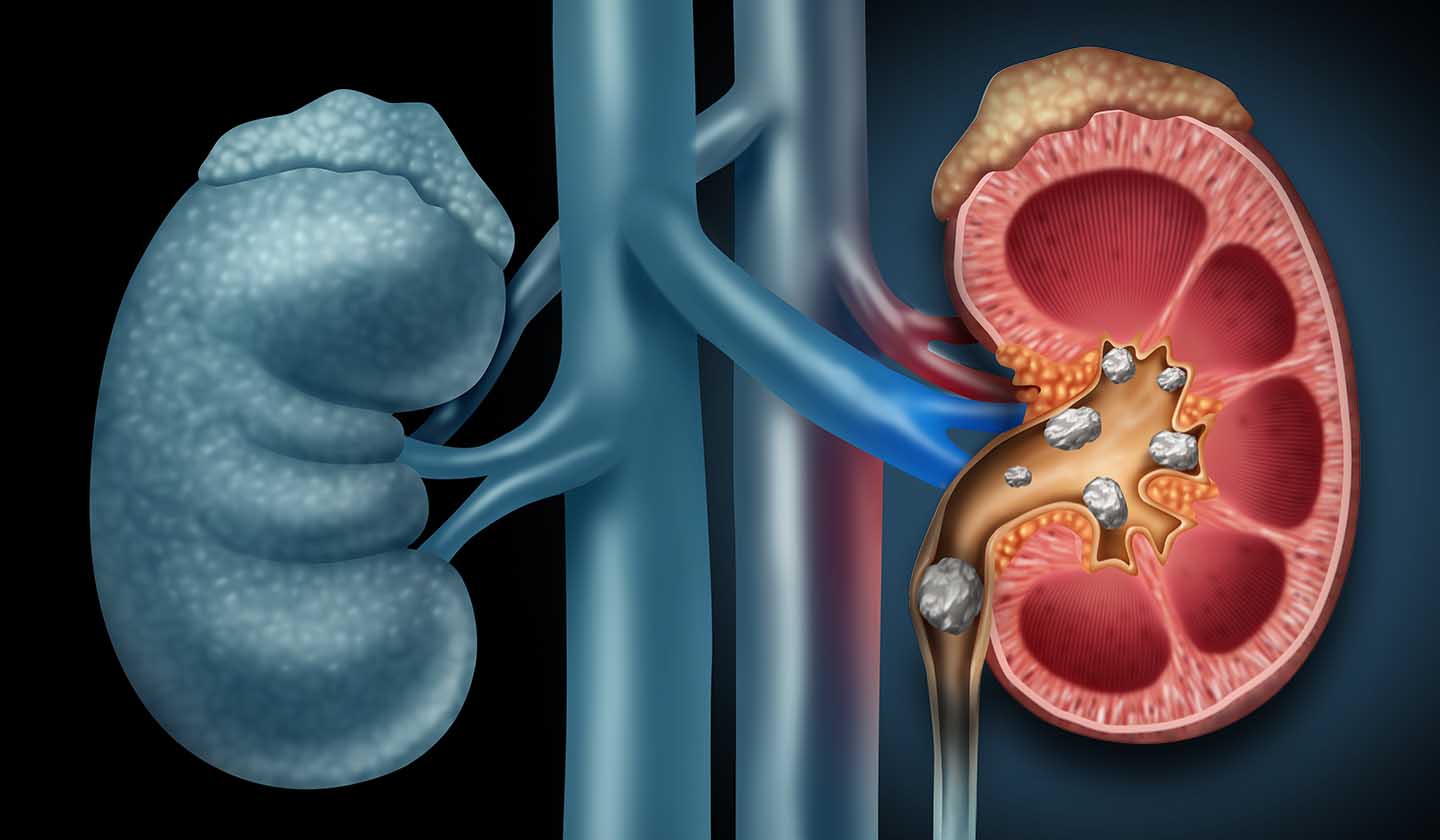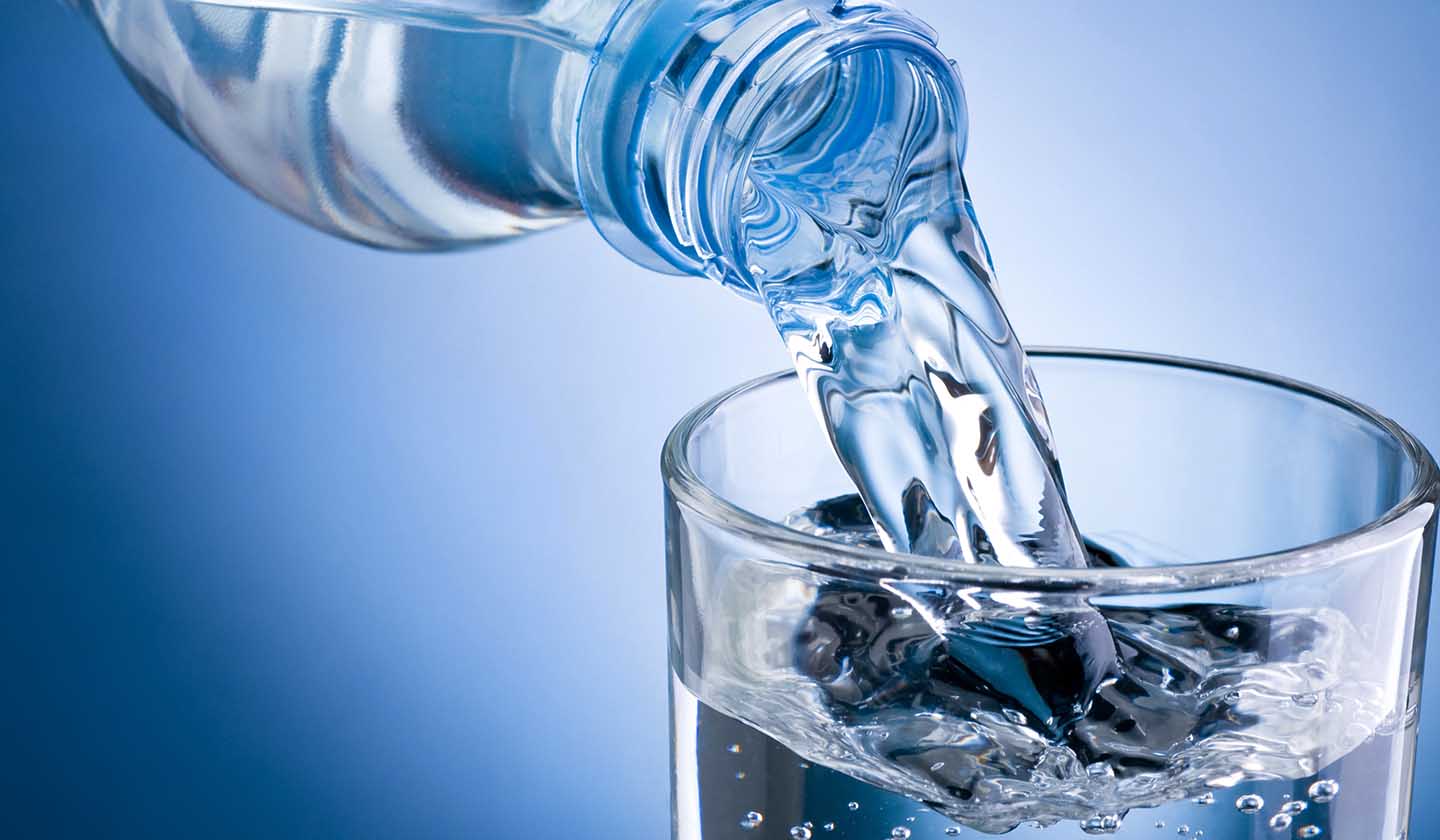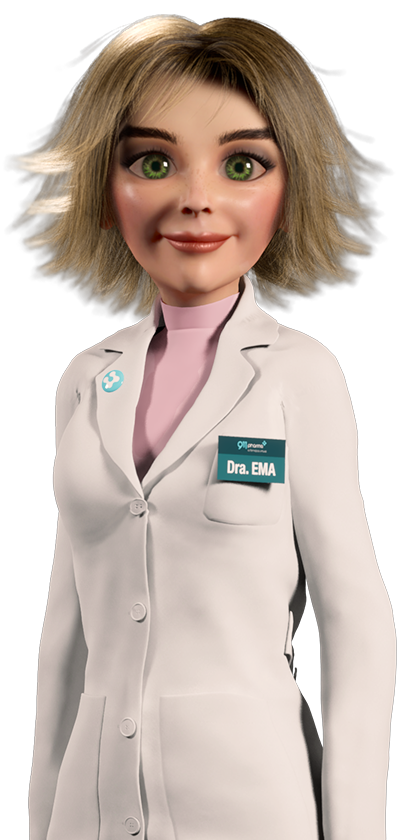Urinary tract
Kidney Stones - Gemstones of little value

Our urinary system consists of two kidneys, two ureters, a bladder, and a urethra, and is responsible for the formation, deposit, and elimination of urine.
The kidneys are organs with a bean-like shape, about 10 cm long and 5 cm wide, being the place where urine is formed.
Stones, or calculi, are hard masses that form in the urinary tract due to the accumulation of crystals. These crystals are formed due to increased elimination in the urine of substances such as calcium, uric acid, oxalate, and phosphate. Their dimensions can vary between the size of a grain of sand to a golf ball.
The presence of calculi can cause pain, bleeding, infection and block the urine flow.
Urinary calculi begin to form in the kidneys and can later move to the ureters and bladder. Depending on their position, they may be called kidney, urethral or bladder (vesical) calculi. The symptoms appear when the calculi begin to move.
About 12% of the adult population in Portugal is estimated to, at some stage, suffer from urinary lithiasis. Due to the anatomy of a man's urinary tract, he has a greater predisposition for the development of the disease.
Causes of urinary lithiasis:
- Malformations of the urinary tract
- Bad eating habits
- Little water intake
Factors that favour the appearance of kidney stones:
- Family history of the disease
- Male sex
- Living in warm environments
- Diet rich in protein, salt, and sugar
- Obesity

Warning signs:
- Low back pain (renal colic)
- Discomfort in the lower back
- Presence of blood in urine
- Recurrent urinary infections
- Appearance of cloudy urine and with grains of sand
Small stones may not cause any symptoms, but larger ones cause severe pain in the area between the ribs and hips.
In most cases their elimination is spontaneous, despite being quite painful they leave no sequelae, or it may be necessary to turn to some type of medical treatment to remove them.
Patients can live for years with kidney stones without ever realising or having any symptoms. The doctor can only identify if a patient is suffering from urinary lithiasis when a renal colic occurs.
Renal colic
Renal colic occurs when there is some obstruction of the urinary tract, preventing the passage of urine. During these crises there may be discomfort or severe pain, which can radiate to the groin. Also, vomiting and nausea may occur. Sometimes, the stone breaks up or is released and the symptoms disappear, which makes the patient devalue the situation, not seeking medical advice.
In renal colic, there may also be an urge to urinate, as well as weight sensation in the bladder region, which can be mistaken for a urinary infection.
In case of fever, the situation might be more serious, and there is a risk of a severe infection.

Treatment
If the kidney stone is small, it will be eliminated by itself, and no medical intervention is necessary.
If the stones are not spontaneously eliminated, are significant in size or are causing complications to the patient, they will have to be surgically removed or fragmented by ultrasound.
How to prevent it?
- Increase fluid intake – 2l / day and, on warmer days, 3l / day;
- Reduce salt consumption;
- Avoid consumption of processed foods;
- Give preference to lean meat that has less protein.
Sources
iSaúde
Farmácia Distribuição Magazine
Também lhe poderá interessar
Digestive system
Flatulence - Release of air, voluntary or otherwise
Bones and joints






